7 Stunning Examples of Arad Architecture to Explore
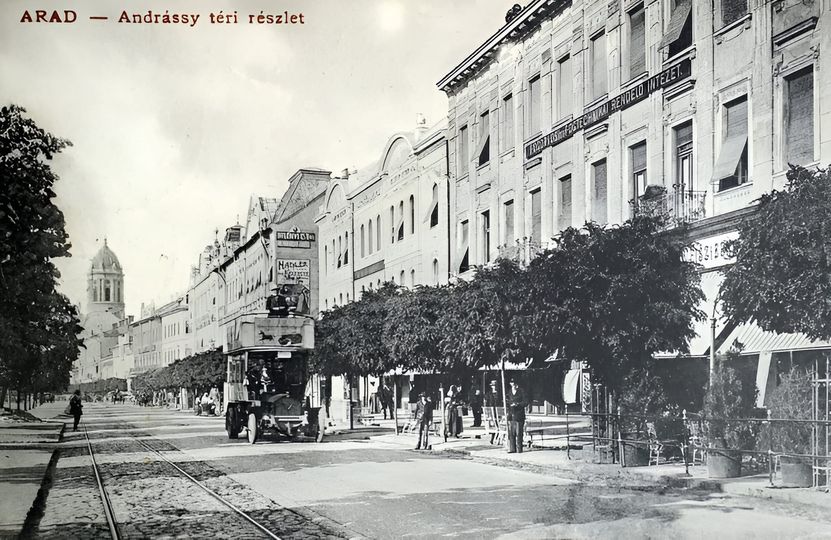
Arad architecture stands out as a true crossroads of cultures and eras, where every building has a story carved in stone or brick. Historians point out that the city is home to unique structures combining Baroque, Neoclassical, Art Nouveau, and modernist styles all within walking distance of each other. You might expect these styles to clash, but instead they fit together in a surprising harmony. This unlikely mix reveals how Arad’s streets double as an open-air museum of multicultural history and resilience.
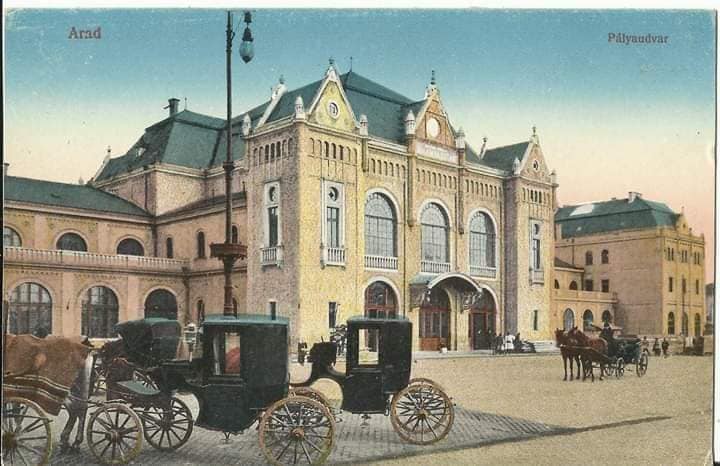
Table of Contents
- Introduction To Arad Architecture And Its Significance
- Example 1: The Neolog Jewish Synagogue
- Example 2: The Arad City Hall
- Example 3: The Roman Catholic Cathedral
- Example 4: The Culture Palace
- Example 5: The House Of Culture
- Example 6: The State Theatre Of Arad
- Example 7: The Red Church And Its Unique Design
Quick Summary
| Takeaway | Explanation |
|---|---|
| Arad architecture blends diverse cultural influences. | Arad showcases a mix of Habsburg, Hungarian, Romanian, and Serbian styles, reflecting its multicultural history. |
| Neolog Synagogue symbolizes Jewish heritage and resilience. | The synagogue illustrates the cultural richness of Arad’s Jewish community through intricate Tuscan architecture. |
| City Hall exhibits Neoclassical design significance. | As a municipal building, the City Hall represents civic pride and the historical importance of administrative architecture in Arad. |
| Culture Palace represents Art Nouveau excellence. | This building captures the artistic spirit of the early 20th century and serves as a center for community cultural activities. |
| House of Culture fosters community and artistic expression. | Designed in a modernist style, it offers adaptable spaces for various cultural and social events, enhancing community engagement. |
1: Introduction to Arad Architecture and Its Significance
Arad architecture represents a fascinating intersection of cultural influences, historical transformations, and architectural innovation. Located at the crossroads of Western and Central European design traditions, Arad showcases a unique architectural heritage that tells a rich story of multicultural interactions and historical resilience.The architectural landscape of Arad reflects centuries of complex historical developments, blending styles from different periods and cultural backgrounds. From Baroque and Neoclassical to Art Nouveau and modernist designs, the city’s buildings serve as living testaments to its dynamic past. Explore Arad’s cultural roots to fully appreciate the architectural nuances that make this region extraordinary.Key characteristics of Arad architecture include:
- Multicultural Design Influences: Combining Habsburg, Hungarian, Romanian, and Serbian architectural elements
- Adaptive Historical Styles: Seamless integration of different architectural periods and design philosophies
- Preservation of Historical Integrity: Maintaining original architectural details while allowing modern adaptations
According to architectural historians, Arad’s architectural landscape is a testament to the region’s complex historical narrative. The buildings not only represent structural achievements but also serve as cultural markers that illustrate the city’s evolving identity through different historical epochs.Understanding Arad architecture requires more than visual appreciation. It demands a deep exploration of the social, political, and cultural contexts that shaped these remarkable structures. Each building tells a story of resilience, transformation, and the intricate cultural interactions that have defined this remarkable Central European city.
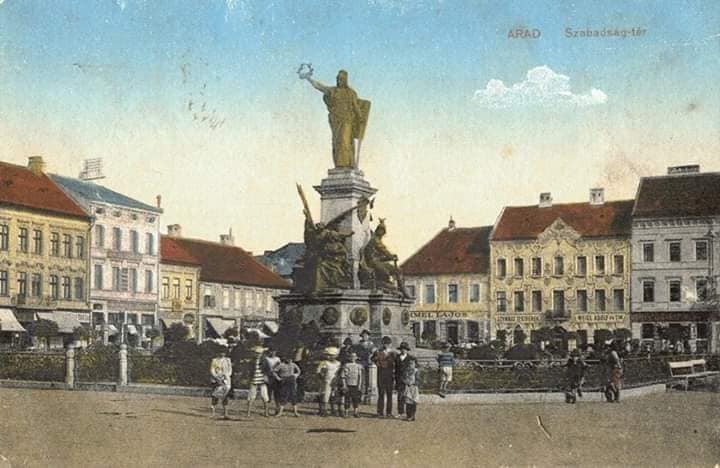
2: Example 1: The Neolog Jewish Synagogue
The Neolog Jewish Synagogue stands as a remarkable architectural gem in Arad, representing the city’s rich Jewish heritage and architectural sophistication. Built in the early 19th century, this synagogue exemplifies the Greek, Tuscan architectural style that was en vogue among Jewish religious buildings across Central Europe during that period.Located in the heart of Arad, the synagogue showcases intricate architectural details that reflect both cultural complexity and artistic excellence. Its design incorporates distinctive elements that blend Middle Eastern architectural motifs with European architectural traditions, creating a unique visual narrative of cultural interchange. Discover more about Arad’s religious heritage to understand the broader context of such significant structures.Key architectural features of the Neolog Jewish Synagogue include:
- Intricate Geometric Decorations: Elaborate patterns inspired by Islamic and Byzantine design traditions
- Ornate Facade: Combining Tuscan architectural elements with local architectural styles
- Symbolic Architectural Details: Representing Jewish cultural and religious symbolism
According to architectural historians, the synagogue represents more than just a religious building. It symbolizes the cultural resilience of Arad’s Jewish community and serves as a testament to the city’s multicultural past. The building’s preservation reflects Arad’s commitment to maintaining its diverse architectural heritage.The Neolog Jewish Synagogue not only stands as an architectural marvel but also as a powerful narrative of cultural coexistence, historical transformation, and artistic expression. Its walls tell stories of community, survival, and the rich tapestry of Arad’s multicultural identity.
3: Example 2: The Arad City Hall
The Arad City Hall emerges as a stunning exemplar of administrative architectural excellence, representing the city’s commitment to blending historical grandeur with functional design. Constructed in the mid-late 19th century, this magnificent building embodies the Flemish Neo-Renaissance architectural style that was prominent during the Austro-Hungarian period, showcasing intricate details and architectural sophistication.Learn more about Arad’s architectural heritage to understand the deeper context of such remarkable structures. The City Hall stands as a testament to Arad’s urban development and cultural identity, with its imposing facade and meticulously crafted architectural elements reflecting the city’s historical significance.Key architectural characteristics of the Arad City Hall include:
- Symmetrical Design: Representing administrative order and civic pride
- Ornate Facade: Featuring elaborate sculptural details and decorative elements
- Strategic Urban Positioning: Symbolizing the city’s administrative center and historical importance
According to architectural historians, the building exemplifies how municipal architecture in Central Europe served not just administrative functions, but also represented civic identity and cultural aspirations. Its design communicates a sense of municipal dignity and historical continuity.The Arad City Hall transcends mere architectural beauty. It represents a tangible connection to the city’s past, embodying the administrative, cultural, and social transformations that have shaped Arad through different historical periods. Each architectural detail tells a story of urban development, civic pride, and the evolving identity of this remarkable Central European city.
4: Example 3: The Roman Catholic Cathedral
The Roman Catholic Cathedral in Arad represents a breathtaking example of Eclectic (a mixture of classicist, baroque, and Renaissance styles) architectural magnificence, standing as a pivotal landmark that reflects the city’s rich religious and cultural heritage. Constructed in the beginning of the 20th century, this cathedral embodies the architectural sophistication and spiritual significance that characterized Central European religious structures during that period.Explore Arad’s religious architectural heritage to understand the deeper context of such remarkable spiritual spaces. The cathedral’s design seamlessly integrates architectural elegance with profound religious symbolism, creating a visual narrative that speaks to centuries of cultural and spiritual traditions.Key architectural features of the Roman Catholic Cathedral include:
- Intricate Classicist, Baroque, and Renaissance Ornamentation: Elaborate sculptural details and decorative elements
- Magnificent Altar Design: Representing complex religious iconography and artistic craftsmanship
- Symmetrical Architectural Composition: Reflecting classical architectural principles
According to architectural historians, the cathedral serves more than a religious function. It represents a comprehensive artistic expression that captures the spiritual and cultural dynamics of Arad during a significant historical period. The building’s architecture communicates layers of historical narrative, cultural interactions, and artistic excellence.The Roman Catholic Cathedral transcends its role as a place of worship. It stands as a profound architectural testament to Arad’s multicultural identity, showcasing how religious structures can embody complex historical narratives, artistic innovations, and spiritual aspirations. Its walls whisper stories of faith, community, and the intricate cultural tapestry that defines this remarkable Central European city.
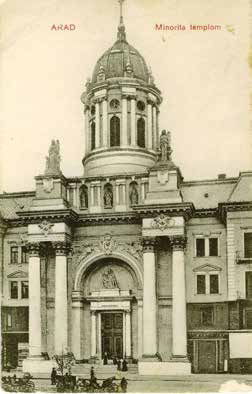
5: Example 4: The Cultural Palace
The Arad Cultural Palace emerges as a stunning architectural masterpiece that encapsulates the city’s artistic and cultural legacy. Constructed in the early 20th century, this remarkable building represents the Art Nouveau architectural style with Neoclassical elements (facade), Italian Renaissance (side wings), and echoes of the Gothic style (inspired by Corvin Castle), showcasing intricate design elements that reflect the innovative spirit of its era.Learn more about Arad’s architectural evolution to comprehend the historical context of such magnificent structures. The Culture Palace stands as a testament to Arad’s commitment to preserving and celebrating cultural heritage through architectural excellence.Key architectural characteristics of the Culture Palace include:
- Elaborate Decorative Motifs: Featuring intricate sculptural details and organic design elements
- Symmetrical Architectural Composition: Balancing aesthetic beauty with functional design
- Unique Facade Ornamentation: Representing the Art Nouveau movement’s artistic principles
According to architectural historians, the Cultural Palace represents more than a building. It symbolizes a cultural nexus that bridges historical artistic traditions with contemporary cultural expressions. The structure serves as a physical manifestation of Arad’s intellectual and artistic aspirations.Beyond its architectural significance, the Cultural Palace represents a vibrant center of community engagement, artistic expression, and cultural preservation. Its walls have witnessed countless performances, exhibitions, and gatherings, making it not just a building, but a living narrative of Arad’s rich cultural landscape. The palace continues to stand as a powerful symbol of the city’s ongoing commitment to artistic excellence and cultural dialogue.
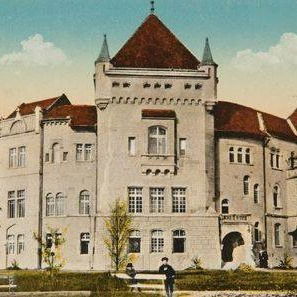
6: Example 5: The House of Culture
The House of Culture in Arad (near the Podgoria lake) represents a remarkable architectural testament to community engagement and cultural preservation. Situated in the heart of the city, this building embodies the architectural principles of mid-20th century modernist design, reflecting the social and cultural dynamics of its era.Discover more about Arad’s cultural spaces to understand the broader context of such significant community structures. The House of Culture goes beyond being a mere building, serving as a vibrant center of community interaction, artistic expression, and social connectivity.Key architectural features of the House of Culture include:
- Functional Modernist Design: Emphasizing clean lines and practical spatial arrangements
- Adaptable Community Spaces: Supporting diverse cultural and social activities
- Integrated Urban Architectural Approach: Harmonizing with the surrounding cityscape
According to urban design experts, the House of Culture represents more than architectural innovation. It symbolizes a dynamic cultural infrastructure that reflects the evolving social needs of Arad’s community. The building’s design demonstrates how architectural spaces can actively contribute to community engagement and cultural preservation.The House of Culture transcends traditional architectural boundaries. It stands as a living, breathing space that nurtures creativity, facilitates social interactions, and preserves the rich cultural tapestry of Arad. Its walls have witnessed countless performances, exhibitions, workshops, and community gatherings, making it a crucial architectural narrative of social and cultural connectivity.
7: Example 6: The State Theatre of Arad
The State Theatre of Arad (the Arad National Theatre until 1920) emerges as a magnificent architectural jewel that epitomizes the city’s rich theatrical and cultural heritage. Constructed in the mid-late 19th century, this remarkable building represents an extraordinary fusion of architectural styles, predominantly showcasing elements of Neoclassical design that capture the artistic spirit of its historical period.Explore the vibrant theatrical history of Arad to understand the deeper cultural context surrounding this architectural marvel. The theatre is not merely a building but a living monument that reflects Arad’s commitment to artistic expression and cultural preservation.Key architectural characteristics of the State Theatre include:
- Elaborate Facade Ornamentation: Featuring intricate sculptural details and decorative elements
- Impressive Interior Design: Showcasing exceptional acoustic and visual performance spaces
- Symbolic Architectural Symbolism: Representing the cultural aspirations of the era
According to performing arts historians, the State Theatre transcends its physical structure. It symbolizes a cultural crossroads where architectural innovation meets artistic performance. The building serves as a testament to Arad’s multicultural heritage and its ongoing commitment to maintaining a vibrant cultural landscape.Beyond its architectural significance, the State Theatre remains a dynamic cultural institution. Its walls have witnessed countless performances, embodying the city’s artistic spirit and serving as a continuous narrative of Arad’s rich theatrical tradition. The theatre stands not just as a building, but as a living, breathing representation of the city’s cultural identity and artistic excellence.
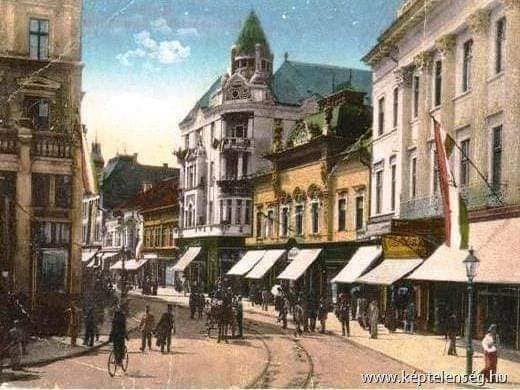
8: Example 7: The Red Church and Its Unique Design
The Red Church in Arad stands as a remarkable architectural testament to Gothic Revival and Neogothic design principles, presenting a stunning example of religious architectural innovation in Central Europe. Named for its distinctive red brick exterior, this church represents a profound fusion of historical architectural techniques and unique regional design elements.Discover more about Arad’s religious architectural heritage to understand the broader context of such extraordinary structures. The church’s design goes beyond traditional architectural boundaries, embodying a complex narrative of cultural and spiritual expression.Key architectural characteristics of the Red Church include:
- Distinctive Red Brick Exterior: Creating a visually striking architectural statement
- Intricate Gothic Revival Architectural Details: Featuring pointed arches and ornate sculptural elements
- Symbolic Architectural Composition: Representing spiritual and cultural narratives through design
According to architectural historians, the Red Church represents more than a religious structure. It symbolizes a profound architectural dialogue between historical design traditions and regional cultural expressions. The building demonstrates how architectural innovation can serve both spiritual and aesthetic purposes.The Red Church transcends its physical form, serving as a living museum of architectural evolution. Its walls tell stories of cultural transformation, artistic innovation, and the enduring spirit of Arad’s architectural heritage. Each architectural element contributes to a complex narrative of spiritual expression and design excellence that continues to inspire and captivate visitors and architectural enthusiasts alike.Below is a comprehensive table summarizing the main highlights, styles, and cultural significance of the seven stunning examples of Arad architecture featured in the article.
| Architectural Example | Primary Style(s) | Key Features & Significance | Cultural & Historical Importance |
|---|---|---|---|
| Neolog Jewish Synagogue | Greek style, Tuscan style | Intricate geometric decorations, ornate facade, symbolic details | Symbol of Jewish heritage and resilience |
| Arad City Hall | Flemish Neo-Renaissance | Symmetrical design, elaborate sculptural details, civic center | Civic pride, administrative and historical monument |
| Roman Catholic Cathedral | Eclectic, a mixture of Classicist, Baroque, and Renaissance styles | Intricate ornamentation, magnificent altar, symmetrical composition | Reflects rich religious and artistic tradition |
| Cultural Palace | Art Nouveau with Neoclassical elements (facade), Italian Renaissance (side wings), and echoes of the Gothic style (inspired by Corvin Castle) | Elaborate decorative motifs, organic design, unique facade | Center for artistic life and community cultural events |
| House of Culture | Modernist | Functional design, flexible spaces, urban integration | Hub for community engagement and cultural preservation |
| State Theatre of Arad | Neoclassical | Ornate facade, impressive interior, cultural symbolism | Beacon of theatrical heritage and multicultural history |
| Red Church | Gothic Revival & Neogothic | Red brick exterior, pointed arches, ornate Gothic elements | Fusion of spiritual and regional architectural dialogue |
Ready to Discover Arad’s Architectural Treasures Up Close?
Have you found yourself inspired by the vivid descriptions and cultural depth in our article about the 7 Stunning Examples of Arad Architecture to Explore? If you want more than just online exploration and wish to experience Arad’s architectural heritage in person, you may face a real challenge: how can you find comprehensive local insights, practical travel guidance, and genuine stories that bring these remarkable landmarks—like the Neolog Jewish Synagogue or the Cultural Palace—to life? For many readers, there is a longing for authentic context and trustworthy resources to unlock Arad’s full multicultural legacy.Now is the perfect moment to take your curiosity to the next level. Visit Arad.zone and immerse yourself in exclusive guides, detailed blogs, and curated information about Arad’s architectural wonders.
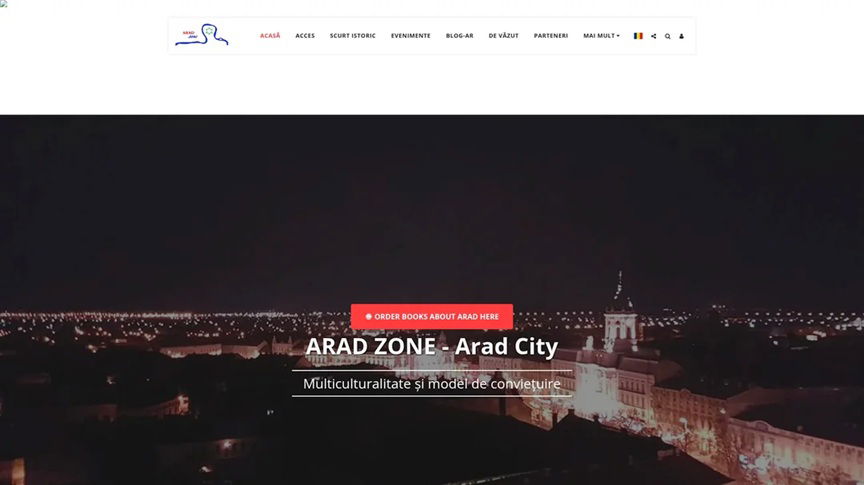
Our platform is specifically designed to help travelers and enthusiasts bridge the gap between fascination and real discovery. See how our expert insights can turn your passion for history, culture, and design into a meaningful adventure. Start planning your journey to Arad today by visiting Arad.zone—your gateway to Central Europe’s hidden architectural marvels.
Frequently Asked Questions
What are the key architectural styles showcased in Arad?
Arad features a blend of architectural styles, including Baroque, Neoclassical, Art Nouveau, and Gothic Revival. Each style reflects the city’s multicultural heritage and historical transformations.
Why is the Neolog Jewish Synagogue significant in Arad’s architecture?
The Neolog Jewish Synagogue is notable for its Tuscan style and intricate geometric decorations, representing the cultural resilience of Arad’s Jewish community while also showcasing cultural interchange through its design elements.
How does the Arad City Hall symbolize civic pride?
The Arad City Hall exemplifies civic pride through its symmetrical design and ornate facade. The architectural grandeur of the building represents the city’s historical significance and its role as the administrative center.
What role does the House of Culture play in the community?
The House of Culture serves as a dynamic center for community engagement and artistic expression. It was designed to support diverse cultural activities and reflects the social needs of the community while preserving Arad’s rich cultural heritage.